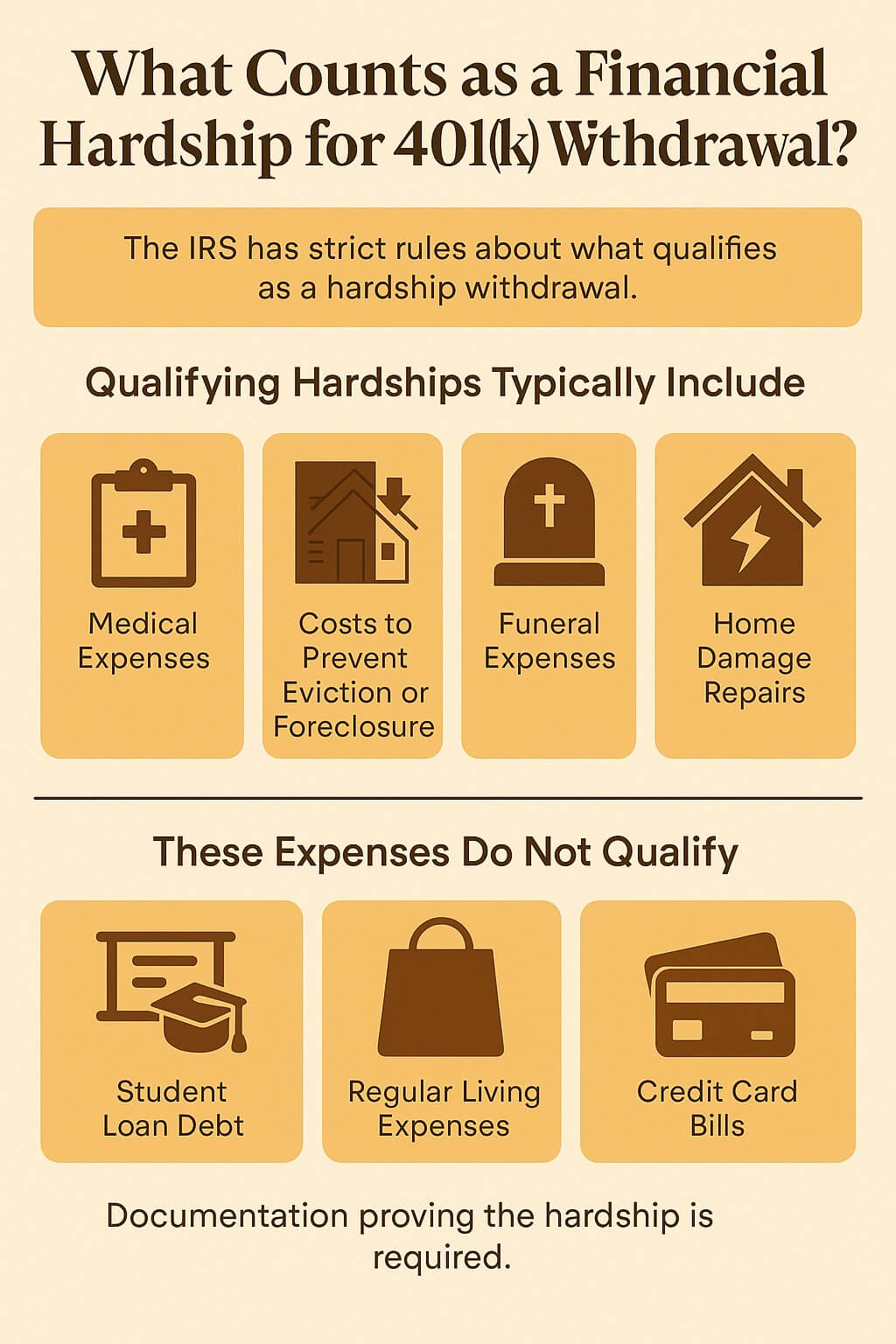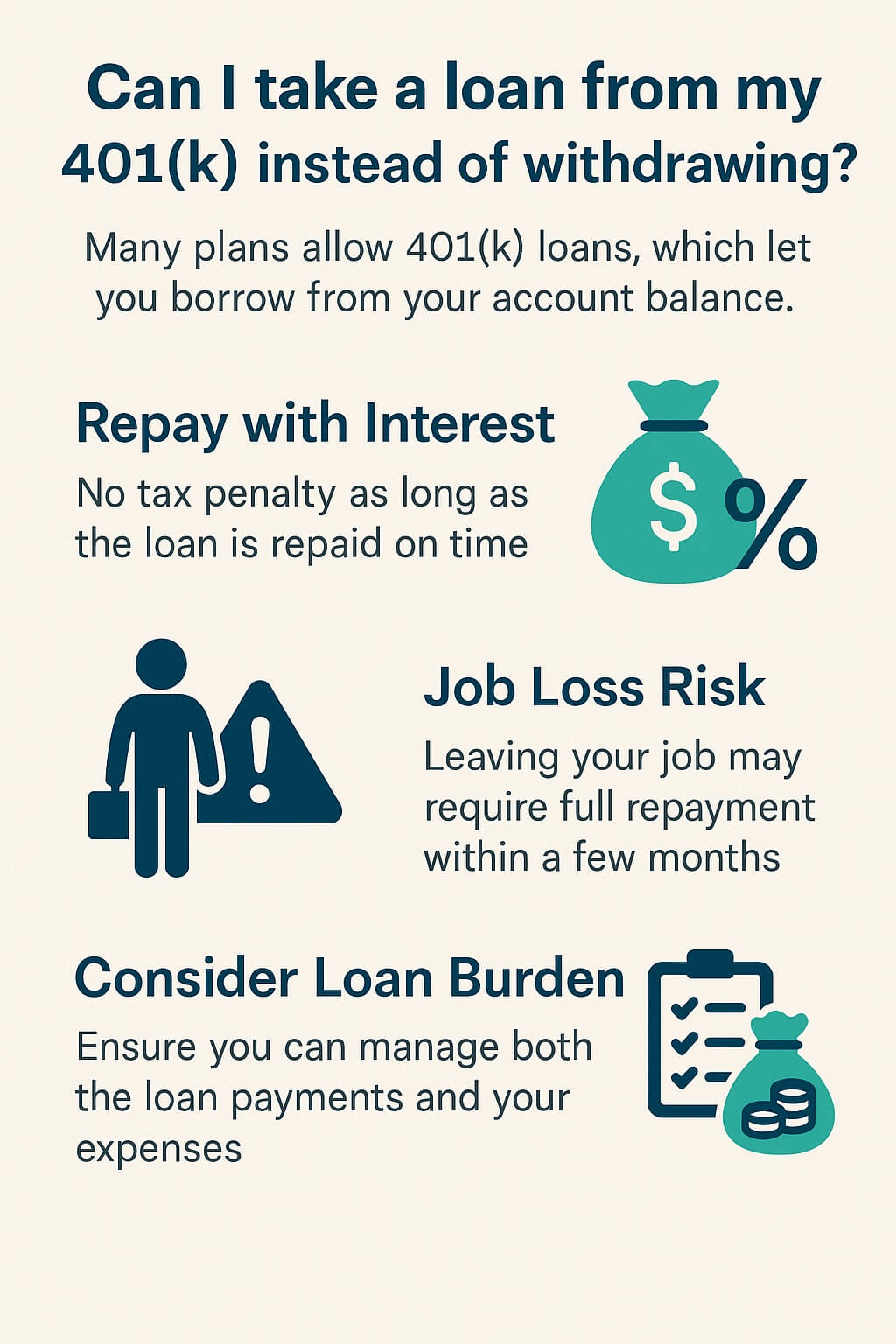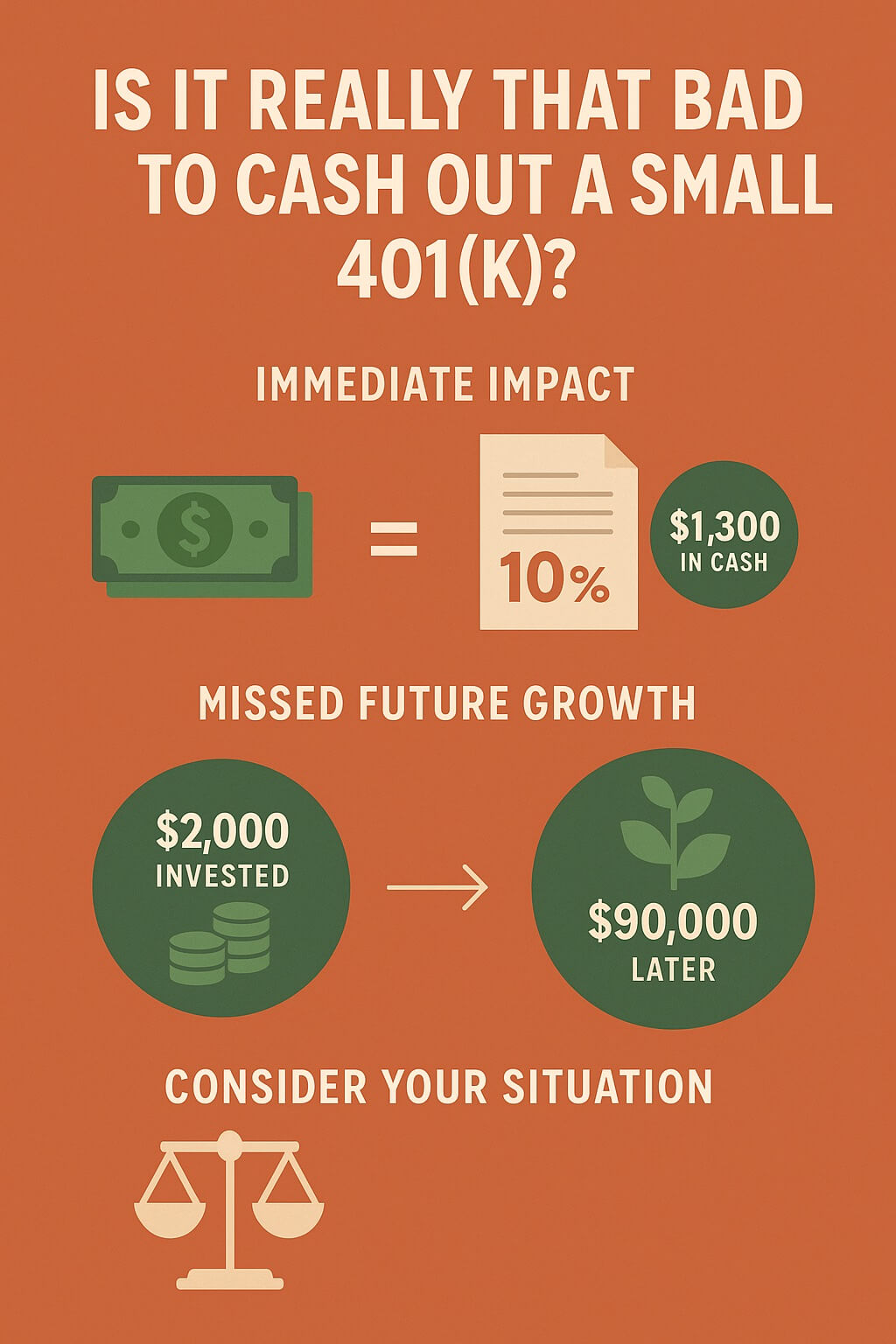Getting automatically signed up for a 401k when you’re in your early twenties and dealing with debt can feel like a trap. One day you’re just doing your job, and the next you realize a chunk of your paycheck has been disappearing into a retirement account you never asked for. Now that money is sitting there, and you can’t touch it even though you’ve got student loans breathing down your neck and rent due next week.
This situation is way more common than you’d think, and it creates real stress for young workers trying to make ends meet. Let’s talk about what’s actually happening, what your options really are, and how to think about this money situation.
Why did my employer automatically enroll me in a 401k?
Automatic enrollment has become super common over the past decade. Companies do this because most people never get around to signing up for retirement accounts on their own, even when it’s a good idea. The government actually encourages employers to auto-enroll workers because it means more people end up saving for retirement.
From your employer’s perspective, they’re trying to help. From your perspective when you’re young and have immediate financial pressures, it feels like someone else is making decisions about your money without asking you first.
The law requires employers to notify you about automatic enrollment, but let’s be real—most people don’t read every single document HR gives them, especially during the chaos of starting a new job or switching payroll systems. The opt-out period is usually short, often just 30 to 90 days, and it’s easy to miss.
Once that window closes, the rules change completely. Your contributions become subject to the same restrictions as any other 401k money, which is where your current frustration comes from.
Can I withdraw money from my 401k if I’m still working there?
This is the tough part. The answer is usually no, you can’t just withdraw it while you’re still employed, even though it’s your money that came from your paychecks.
The government created 401k accounts with really strict rules to stop people from raiding their retirement savings for everyday expenses. They want that money to actually be there when you’re old. So they built in penalties and restrictions to make it hard to access.
The specific circumstances where you can take money out while still employed are pretty limited. Financial hardship is one option, but it has a very specific definition that’s narrower than just “I need money.” Leaving your job is another trigger that opens up access. Reaching age 59 and a half is when all restrictions lift, but that doesn’t help you now.
Some 401k plans allow loans, where you borrow from yourself and pay it back through paycheck deductions. Not all plans offer this, and it comes with its own complications, but it’s worth checking if yours does.
What counts as a financial hardship for 401k withdrawal?
The IRS has strict rules about what qualifies as a hardship withdrawal. Having debt and regular bills unfortunately doesn’t meet their criteria, even though it feels like a hardship to you.
Qualifying hardships typically include medical expenses that insurance doesn’t cover, costs to prevent eviction or foreclosure on your primary home, funeral expenses, or certain costs related to repairing damage to your home. Some plans also allow hardship withdrawals for college tuition payments that are due immediately.

Student loan debt generally doesn’t qualify as a hardship, even though it’s a massive burden for young workers. Regular living expenses like groceries, car payments, and credit card bills don’t count either. The IRS basically says those are normal life costs that everyone has to deal with.
If you think you might qualify for a hardship withdrawal, you’ll need to provide documentation proving the hardship and showing you don’t have other resources available. Your plan administrator will review your situation and make a decision.
Even if approved, hardship withdrawals come with taxes and usually a 10 percent early withdrawal penalty since you’re under age 59 and a half. That penalty stings when you’re already strapped for cash.
Should I just quit my job to access the 401k money?
Hold on. This might cross your mind when you’re frustrated, but it’s almost never a good move just to access retirement money.
When you leave a job, you do get access to your 401k funds. You can roll it over to an IRA, leave it where it is, roll it to a new employer’s plan if you get another job, or cash it out. But cashing it out means losing a big chunk to taxes and penalties.
If you withdraw that money as cash, the IRS treats it as regular income. You’ll pay your normal income tax rate on it, plus that 10 percent early withdrawal penalty. On a couple thousand dollars, you might lose 30 to 40 percent depending on your tax bracket. So your couple thousand becomes maybe $1,500 or less in actual cash.
Quitting a job you otherwise want to keep just to access money you’d then lose a huge chunk of doesn’t make financial sense. You’d be giving up steady income and potentially benefits for a one-time payment that’s smaller than you expect.
Can I take a loan from my 401k instead of withdrawing?
This is a better option if your plan allows it, though it’s still not ideal. Many 401k plans let you borrow up to 50 percent of your vested balance, up to $50,000 maximum.
The advantage of a 401k loan is that you’re borrowing from yourself and paying yourself back with interest. There’s no tax penalty as long as you pay it back according to the loan terms. The interest you pay goes back into your own account.
You typically have to repay the loan within five years through automatic paycheck deductions. The payments come out after taxes, which means you do actually take home less money, but at least you’re not losing 30 to 40 percent to taxes and penalties like you would with a withdrawal.

The big risk with 401k loans is what happens if you leave your job or get laid off. Most plans require you to repay the entire loan within 60 to 90 days of leaving employment. If you can’t, the remaining balance gets treated as a withdrawal, which means taxes and penalties hit you all at once.
Before taking a 401k loan, ask yourself honestly if you’d be able to handle both the loan repayments and your regular bills. If adding the loan payment would stretch you even thinner, it might create more problems than it solves.
What happens to my 401k if I leave it alone?
Let’s look at the flip side. What if you just let that money sit there, even though it’s frustrating right now?
That couple thousand dollars has decades to grow. The stock market historically returns about 10 percent per year on average over long periods. Your money could potentially double every seven to ten years just by sitting there invested.
At age 22, money you put in a 401k now has roughly 40 years to grow before you’d typically retire. With compound growth, even a few thousand dollars now could become tens of thousands by retirement age. That’s the reason the system locks this money up—to let it do exactly this.
Most 401k accounts have you invested in mutual funds or target-date funds that own stocks and bonds. As long as you’re invested and not just holding cash, your money should grow over time despite market ups and downs.
You’re also getting a tax break now that you probably don’t realize. The money going into a traditional 401k comes out of your paycheck before taxes. This lowers your taxable income slightly, which means you pay a bit less in income taxes. You’ll pay taxes eventually when you withdraw in retirement, but your tax rate might be lower then.
How do I stop future contributions if I can’t get past money back?
Even if you can’t access the money already in your 401k, you can definitely stop future contributions so you’re not making the financial squeeze worse.
Contact your HR department or log into your 401k account portal. There should be an option to change your contribution percentage. You can lower it to zero, which stops any future money from going in.
Some people choose to lower contributions rather than stopping completely. Even dropping from 10 percent to 2 or 3 percent might give you enough breathing room in your budget while still putting something toward retirement.
Before you stop completely, check if your employer offers a matching contribution. This is free money—they put in extra funds when you contribute. If you’re getting a match, try to contribute at least enough to get the full match if you can swing it at all. Giving up free money makes a bad situation worse.
Is it really that bad to cash out a small 401k?
The honest answer is that it’s not the end of the world, but it’s definitely not optimal. Plenty of people have cashed out small retirement accounts when they were young and survived just fine.
The real cost isn’t just the taxes and penalty you pay immediately. It’s the future growth you give up. That hurts more in the long run than the penalty.
Let’s say you have $2,000 in your 401k. After taxes and penalty, you might get $1,300 in cash. That $1,300 might help you pay down some debt or cover bills for a month or two. That’s real and valuable when you’re struggling.

But if you’d left that $2,000 invested for 40 years with average market returns, it could grow to around $90,000 or more. That’s the trade-off you’re making—$1,300 now versus potentially tens of thousands later.
Only you can decide if that trade-off makes sense for your situation. If you’re about to be evicted or can’t buy food, obviously you need money now. But if you can find other ways to handle your current situation, letting the 401k money grow usually works out better.
What other options do I have for handling debt and bills?
Before you do anything drastic with your 401k, explore whether other solutions might help your immediate money problems.
For student loans, look into income-driven repayment plans that cap your monthly payment at a percentage of your income. These can dramatically lower your payments if you’re not earning much. You can also look into deferment or forbearance options if you’re really struggling, though interest usually keeps accumulating.
For credit card or other debt, consider calling creditors to ask about hardship programs. Many have options to temporarily lower payments or interest rates if you’re having trouble.
Check if you qualify for any assistance programs like SNAP for groceries or help with utilities. These programs exist for exactly your situation and there’s no shame in using them when you need them.
A side gig might bring in extra money without having to raid your retirement account. Even a few hours a week of freelancing, delivery work, or dog walking could help close the gap in your budget.
Creating a bare-bones budget where you ruthlessly cut anything non-essential might free up more money than you think. Cancel subscriptions, meal prep cheap foods, find free entertainment—it’s not fun but it’s temporary.
Should I talk to a financial advisor about this?
For a 401k with just a few thousand dollars, paying a financial advisor probably doesn’t make sense. Their fees would eat up too much of what you have.
However, many employers offer free financial counseling as part of their benefits. Check with HR to see if this is available. These counselors can look at your specific situation and give personalized advice without charging you.
Non-profit credit counseling agencies also offer free or low-cost help with budgeting and debt management. They’re not trying to sell you products, just help you make a plan.
The reality of being in your early twenties with debt and a modest income is that it’s really hard. The 401k situation adds frustration on top of an already stressful financial picture. But you have more options than it might feel like right now, and the choice you make about this retirement money will affect your finances for decades to come.
